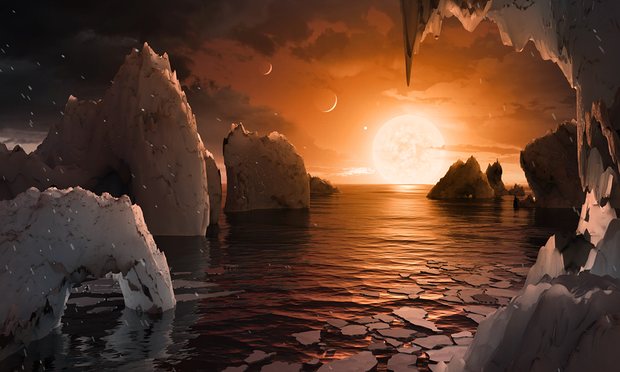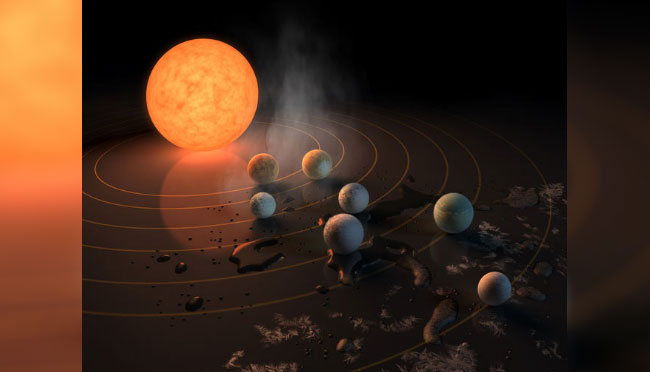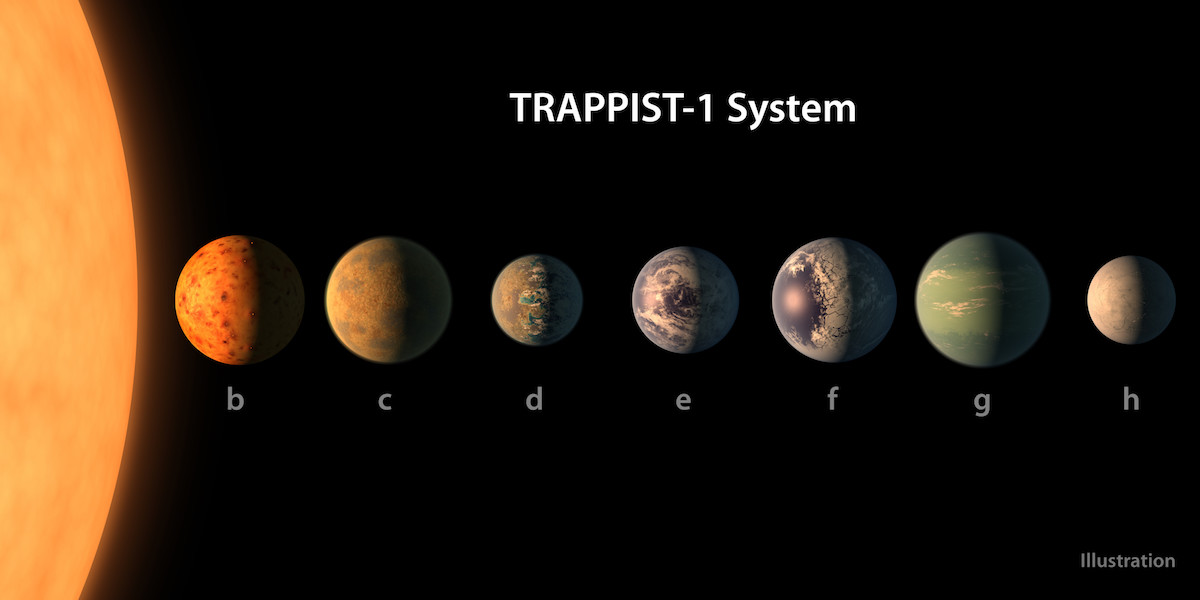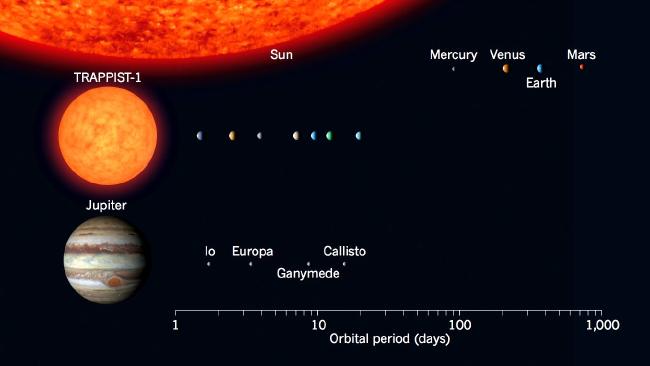
*PULLS EXCITING NEWS KLAXON LEVER* NASA have just announced the discovery of seven worlds, similar in size to Earth, around a small yet relatively nearby star known as Trappist-1.
Trappist-1 is a dwarf star, roughly the same size as Jupiter. Although the newly discovered planets are far closer to it than we are to our own sun, the weak light from it (it’s reportedly about 2,000 times fainter than the light from our own Sun) means that the temperature on the planets should be temperate. By extension of this, the chance of liquid water and potentially life existing on them is greatly increased.
The solar system is about 39 light years from our own, so it’s not exactly a quick drive up the M1. But in space terms, 39 light years is nothing. 39 light years is a house at the end of the road, a neighbour you nod at knowingly in the supermarket.



